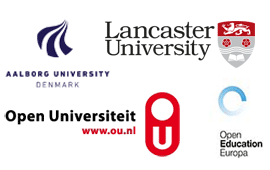

An investigation of technology mediation in interdisciplinary research within Higher Education
Erin Young, Niall Winters, University of Oxford
There has been a growing awareness of interdisciplinary collaboration as a means of addressing new challenges within academic research, and digital technology has been a core underlying support in these endeavours (Scanlon et al., 2013, p.49; Haythornthwaite et al., 2003, p.144). ‘Digital technologies will be a core aspect of interaction and cooperation between different fields of expertise’ (Costa, 2011, p.84). This paper investigates the process of technology-mediated knowledge co-production in interdisciplinary research in Higher Education, and explores how researchers from different disciplines appropriate technology to break down disciplinary boundaries. Through the presentation of findings from a collective case study of two interdisciplinary research projects based at the University of Oxford - the Ashmolean Latin Inscriptions Project (AshLi) and Poetry Visualisation: Imagery Lens for Visualising Text Corpora (PVis) - this paper aims to challenge conventional approaches to investigating the use of technology in interdisciplinary scholarship, responding to the paucity of research at the intersection of interdisciplinarity, collaborative research and technology in academia.
Findings from interviews with academic researchers, and a visual analysis of project artefacts, elucidate a mutually shaping relationship between innovative research technologies and new interdisciplinary research practices. Technology can be constructed through the integration of disciplinary perspectives. Researchers from different disciplines both adopt and adapt technologies, and through these processes, disciplinary boundaries are broken down, and knowledge is co-created. This iterative process of mutual shaping assumes different nuances according to the disciplinary ‘make-up’ of a project, the technologies involved, and the ways in which the researchers appropriate technologies according to their disciplinary backgrounds.
Using the social construction of technology (SCOT) as a theoretical framework illuminates researchers’ diverse perceptions of technologies and interdisciplinary practices, and highlights the importance of interpretation in the use of technology within these contexts. This paper contributes to the area of networked learning by highlighting that collaboration around research technologies has not been explored very much in the field, nor has the potential for building on other concepts from the area of science and technology studies (STS) such as Actor-Network Theory (Clough et al., 2010; Adams and Thompson, 2014). In this way, the findings hold broad implications for substantive promotion of a more nuanced view of modern interdisciplinary practices.
Keywords
Interdisciplinary research, technology, collaboration, digital scholarship
Joint Organising Institutions
| Conference Travel and Accommodation |Doctoral Consortium | Past Conference Proceedings | Contact |